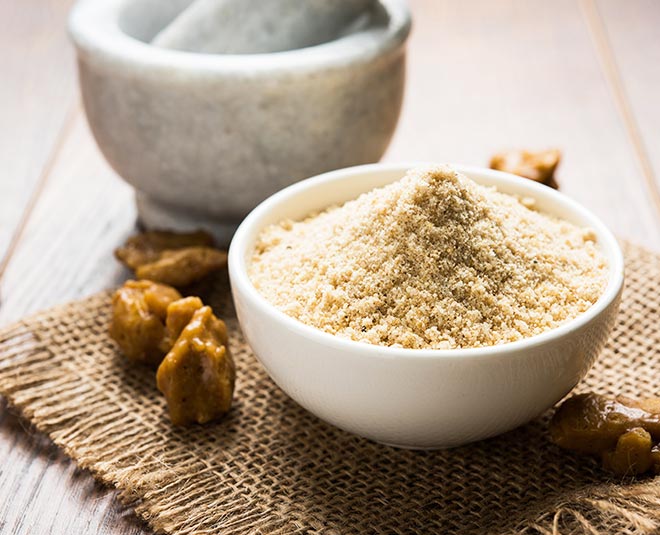Blog
What are the side effects of asafoetida?

Introduction to Asafoetida: A Historical Perspective
Asafoetida’s rich history spans millennia, with its usage documented in ancient texts such as the Ayurveda and traditional Chinese medicine. Renowned for its distinct aroma and flavor profile, asafoetida plays a crucial role in enhancing the taste and aroma of numerous culinary delicacies, particularly in South Asian cuisines. Moreover, its medicinal properties have earned it a revered status in traditional medicine systems worldwide.
The Therapeutic Potential of Asafoetida
Asafoetida is celebrated for its diverse therapeutic applications, owing to its potent bioactive compounds such as ferulic acid and umbelliferone. Its carminative properties make it a popular choice for alleviating digestive issues like bloating, gas, and indigestion. Additionally, asafoetida’s anti-inflammatory and antimicrobial properties render it effective in treating respiratory ailments like asthma and bronchitis. Furthermore, its antispasmodic effects have been utilized in relieving menstrual cramps and other gynecological issues.
Navigating the Side Effects of Asafoetida
Despite its numerous health benefits, asafoetida is not exempt from side effects, especially when consumed in excess or by individuals with specific sensitivities. Gastrointestinal discomfort, including nausea, vomiting, and diarrhea, is one of the most commonly reported side effects associated with asafoetida consumption. This may be attributed to its potent nature, which can irritate the stomach lining and trigger adverse reactions in susceptible individuals.
Potential Allergic Reactions
For some individuals, exposure to asafoetida may elicit allergic reactions ranging from mild itching and skin rashes to severe anaphylaxis. Such hypersensitivity reactions occur due to the immune system’s overreaction to certain components present in asafoetida. Individuals with known allergies to related plants, such as celery, carrots, or fennel, may be at a higher risk of experiencing allergic responses to asafoetida.
Impact on Blood Pressure and Blood Sugar Levels
Individuals with pre-existing medical conditions, such as hypertension or diabetes, should exercise caution while consuming asafoetida, as it may influence blood pressure and blood sugar levels. Asafoetida possesses hypotensive properties, which could potentially lower blood pressure beyond desirable levels when consumed in large quantities. Similarly, its ability to enhance insulin secretion may lead to fluctuations in blood glucose levels, necessitating careful monitoring, especially for diabetic individuals.
Pregnancy and Lactation Considerations
Pregnant and lactating women are advised to exercise prudence when incorporating asafoetida into their diet or medicinal regimen. While there is limited scientific evidence regarding its safety during pregnancy and breastfeeding, the potential risks associated with asafoetida consumption warrant cautiousness. Pregnant women should consult healthcare professionals before using asafoetida to mitigate any potential adverse effects on maternal and fetal health.
Drug Interactions and Contraindications
Asafoetida’s pharmacological properties may interact with certain medications, thereby necessitating vigilance among individuals concurrently undergoing drug therapy. For instance, asafoetida’s blood-thinning effects could potentiate the actions of anticoagulant medications like warfarin, increasing the risk of bleeding complications. Similarly, its hypotensive properties may amplify the effects of antihypertensive drugs, leading to excessively low blood pressure levels. Moreover, individuals with bleeding disorders or scheduled surgical procedures should avoid asafoetida due to its anticoagulant effects.
Adverse Effects on Reproductive Health
While asafoetida has been traditionally used to alleviate menstrual cramps and regulate menstrual cycles, excessive consumption may adversely affect reproductive health in some individuals. Its emmenagogue properties, which stimulate blood flow to the pelvic region, could potentially exacerbate menstrual bleeding or lead to uterine contractions, posing risks, particularly during pregnancy. Consequently, women with a history of reproductive disorders or those undergoing fertility treatments should exercise caution when using asafoetida.
Exploring the Nuances of Asafoetida’s Side Effects: A Comprehensive Analysis
Asafoetida, revered for its culinary and medicinal properties, presents a complex interplay of benefits and side effects. This multifaceted resin, extracted from Ferula plants, has been an integral component of traditional healing practices for centuries. While its therapeutic potential spans gastrointestinal relief, respiratory support, and menstrual regulation, it is crucial to navigate the nuanced landscape of its side effects.
Unveiling Gastrointestinal Discomfort:
Among the most commonly reported side effects of asafoetida consumption are gastrointestinal disturbances. Individuals may experience discomfort in the form of nausea, vomiting, or diarrhea, particularly when ingesting high doses or in concentrated forms. The potent nature of asafoetida can irritate the delicate lining of the stomach, triggering adverse reactions in sensitive individuals.
Treading Cautiously with Allergic Reactions:
For some, exposure to asafoetida may provoke allergic responses, ranging from mild skin irritation to severe anaphylaxis. These hypersensitivity reactions stem from the immune system’s overreaction to specific compounds present in asafoetida. Notably, individuals with existing allergies to related botanicals, such as celery or fennel, may be predisposed to heightened sensitivity to asafoetida.
Navigating Blood Pressure and Blood Sugar Dynamics:
Asafoetida’s influence on blood pressure and blood sugar levels warrants careful consideration, particularly for those with underlying health conditions. While its hypotensive properties may benefit individuals with hypertension, excessive consumption could lead to dangerously low blood pressure levels. Similarly, its impact on insulin secretion raises concerns for diabetic individuals, necessitating close monitoring to prevent fluctuations in blood glucose levels.
Delicate Balancing Act for Pregnant and Lactating Women:
Expectant mothers and nursing women must approach asafoetida consumption with caution due to limited safety data. While traditionally used to alleviate menstrual discomfort, its potential effects on uterine contractions and fetal development raise concerns during pregnancy. Consulting healthcare providers is imperative to weigh the benefits against potential risks and ensure the safety of both mother and child.
Acknowledging Drug Interactions and Contraindications:
Asafoetida’s pharmacological properties may interact with certain medications, necessitating vigilance among individuals undergoing drug therapy. Potential interactions with anticoagulants and antihypertensive drugs underscore the importance of consulting healthcare professionals before integrating asafoetida into one’s regimen. Additionally, individuals with bleeding disorders or scheduled surgeries should avoid asafoetida due to its anticoagulant effects.
Reproductive Health Considerations:
While traditionally utilized to regulate menstrual cycles and alleviate menstrual cramps, asafoetida’s emmenagogue properties pose potential risks for reproductive health. Excessive consumption may exacerbate menstrual bleeding or induce uterine contractions, warranting caution, particularly for women with a history of reproductive disorders or those undergoing fertility treatments.
Striking a Balance:
In navigating the intricacies of asafoetida’s side effects, moderation emerges as a guiding principle. By balancing its therapeutic benefits with potential risks, individuals can harness its healing potential effectively. Educating oneself about dosage guidelines, monitoring for adverse reactions, and seeking professional guidance when needed are essential steps in optimizing the benefits of asafoetida while mitigating its side effects.
In essence, the side effects of asafoetida underscore the importance of informed decision-making and mindful consumption. By understanding its potential risks and contraindications, individuals can navigate its complexities with confidence, reaping its therapeutic rewards while safeguarding their health and well-being. Embracing moderation and seeking professional guidance where necessary empower individuals to harness the holistic benefits of asafoetida in their journey towards enhanced health and vitality.
Navigating the Balancing Act
While asafoetida offers a plethora of health benefits, its side effects underscore the importance of moderation and informed consumption. By understanding the potential risks and contraindications associated with asafoetida, individuals can make informed decisions regarding its use, thereby optimizing its therapeutic efficacy while minimizing the likelihood of adverse reactions. Consulting healthcare professionals and adhering to recommended dosage guidelines are essential steps in harnessing the healing potential of asafoetida while safeguarding overall health and well-being.
FAQ:




One thought on “What are the side effects of asafoetida?”